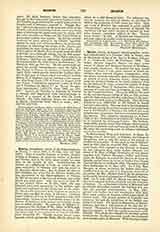

Marsi, Diocese of (MARSORUM), in the province of Aquila, Central Italy, with its seat at Pescina. With the exception of Sabina, it is the only diocese that receives its name from a people, and not from a city. The Marsi were a warlike people who lived about Lake Fucino. In 325 B.C. they allied themselves with the Romans, revolted in 309 in favor of the Samnites, but in 304 returned to the Roman alliance. The chief divinity of the Marsi was the goddess Angitia. In the time of the Lombards the territory formed a county subject to the Duchy of Spoleto, and the counts gave several popes to the Church—among them Innocent III. According to legend, the Gospel was preached to the Marsi in Apostolic times by Saint Mark, and Saint Rufinus, their bishop, was martyred about 240. The episcopal see was originally at Santa Savina, but, as this place was isolated and therefore insecure, Gregory XIII permitted, in 1580, the removal of the bishop’s residence to Pescina, where the cathedral was completed in 1596. Among the bishops of this diocese was Saint Berardo of the family of the Counts of the Marsi. He was educated at Montecassino, and became pontifical governor of the Campagna. On account of his justice and of his severity in that office, he was imprisoned by Pietro Colonna, but Paschal II made him a cardinal, and bishop of his native town. Other prelates of the Marsi were Bishop Jacopo (1276), during whose government of the diocese dissensions arose between the canons of Santa Savina and those of Celano concerning the right to nominate the bishops; Angelo Maccafani (1445), treasurer general of the Marches; Cardinal Marcello Crescenzi (1533); Matteo Colli (1579), under whom the removal of the bishop’s residence to Pescina took place; he was a prisoner for some time in the Castle of Sant’Angelo, but proved his innocence and was liberated; Gian Paolo Caccia (1648), who did much for the public schools; Diego Petra (1664), who restored the seminary, enlarged by Francesco Corradini (1680) and by Nunzio de’ Vecchi (1719). The diocese is immediately subject to the Holy See; it has 78 parishes with 140,000 inhabitants, 6 religious houses of men and 9 of women, 2 educational institutes for male students and 5 for girls.
U. BENIGN

